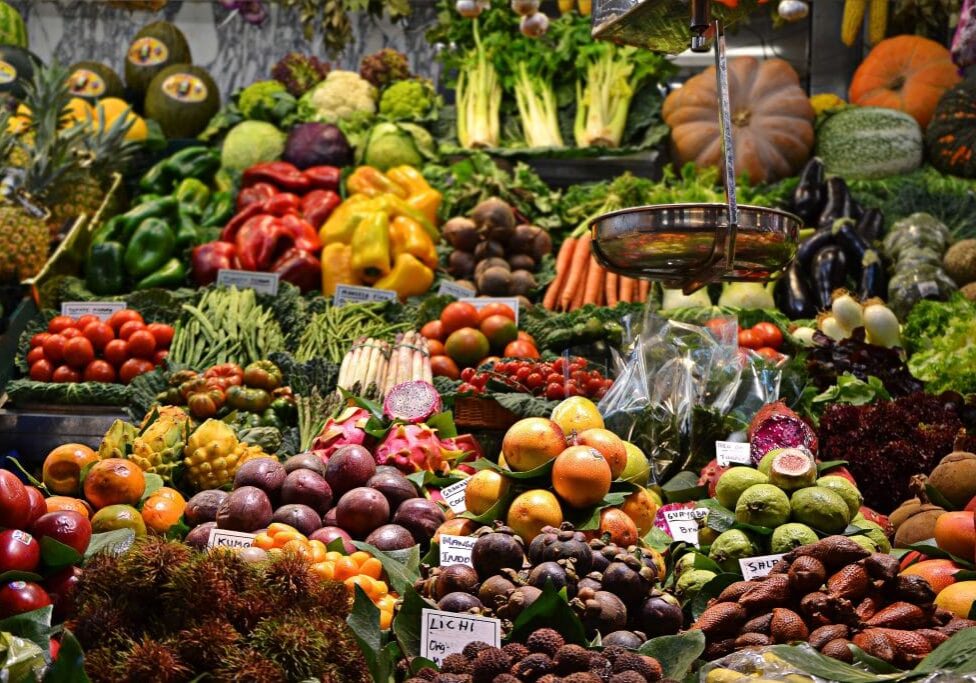How to Make Fruits + Veggies Fun for Kids

We’ve all been there, sitting at the dinner table, locked in what seems like an endless stare down with our children as they try every trick in the book to get out of eating the “least exciting” part of their meal; the fruits and vegetables. Given that it’s likely everyone in your various circles and under the sun will preach the importance of a healthy diet for those growing bodies, it’s understandable that this prospect can seem impossible when dealing with an immovable adversary. But fear not, as we’re here with six quick and easy to achieve tactics to make fruits and vegetables a core and exciting part of your child’s life.
1. Lead by example
It should come as no surprise that the first tip for instilling a healthy diet and approach to nutritious foods in children will come from you. Kids are naturally inclined to take after their parents, so by setting good examples and practicing what you preach in front of your children, this creates a positive attitude for them to emulate as well. In practice, this could involve eating a healthy dinner with them that includes the vegetables you want them to eat or taking them on grocery trips to demonstrate the healthy decision-making process when it comes to food.
2. A touch of sweetness

Of course, an example to emulate won’t always result in instant success. Therefore, it can be quite handy to use recipes that gently transition kids towards healthier choices with a touch of sweetness. This is especially valuable in the snack department. A classic example of this is one of my favourites to this day, “Ants on a Log.” With a spoonful of peanut butter (or Vegemite, if your child has a salt tooth like mine does), a celery stick and some raisins, you have a fun and classic snack that gets a fruit and vegetable hit in one go. Using recipes like this will make the prospect of a healthy snack something to look forward to, rather than a last resort.
3. Deceive to achieve

There’s no denying that in some cases, there is no amount of peanut butter, Vegemite or even Nutella that can lure your kids into eating their fruit and veggies. And in these cases, I’m not above using the same kind of tactics that my kids use to avoid vegetables in order to sneak them into their diets. From dropping a few spinach leaves into a delicious smoothie, to sweating down vegetables to seamlessly incorporate them into a bolognaise and substituting them in the most unexpected of places, such as using cauliflower in place of rice or in a pizza base, a quick search across the web and cooking magazines will keep you stocked with the latest and greatest tools in your rogue’s kit for this stealthy approach.
4. Thrill to Fulfill
Whilst the previous tips are incredibly useful in getting fruits and vegetables into your kids, there will be situations where you are low on time and pantry stocks, and you’ll need to take a direct approach. This is where changing the way that your kids see fruits and vegetables can come in handy, and this can be done in quite a few ways.
For instance, by making these foods seem like the most exciting part of the plate and approaching them first, you can encourage kids to be excited about eating them. You can also play to your child’s interests; if they’re interested in superheroes, point out that Superman grew up to be big and strong by eating his vegetables, or if they’re into fairytales, highlight the magical nature of cauliflower and broccoli as the tiny trees that are blessed by fairies, gnomes, and sprites. Lastly, change the way they are presented. Given how prominent fast-food restaurants are, there is no reason why you can’t use a range of vegetables in a chip form, or zucchini as noodles to replicate the desirability of fast food at home.
5. Work together

A healthy, fruit and vegetable-filled lifestyle comes from the consistency of your attitude and choices, which is why it is important to utilize some long-term tactics in your approach to making fruits and vegetables fun for kids. This can be done by including them in various ways outside of just simply mealtimes. Firstly, when they’re old enough, allow them into the kitchen to be part of the process. Research has shown that when kids are included in the cooking process, even in the simplest of ways, they are more inclined to be excited by the prospect of eating the prepared meal.
Secondly, if possible, establish a small vegetable or herb garden. Not only can this be a fun activity for you and your children to do together, it will also teach them to respect the process that goes into making the food they eat at a holistic level, but they will love and be proud of using what they’ve grown in the kitchen.
6. Be patient
It’s important to remember that kids change every day, and that developing healthy habits takes time. So, while they may flip flop on whether they love or hate a particular fruit or vegetable, it’s only because they are in the complex process of developing their tastes and preferences. Be sure to keep at it, stay flexible with your approach and allow your child time to grow, and you’ll have them loving fruits, vegetables, and the healthy lifestyle.
